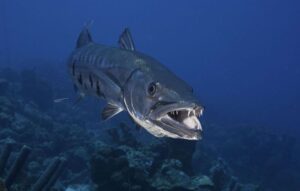The gentle animal turns into a biter in the story of a dolphin that attacked humans 50 times.

Dolphins are generally loved by humans due to their reputation as gentle and friendly animals. Many see them as a source of joy and fun, as well as a symbol of harmony between humans and the environment.
But it seems that this does not apply to all dolphins, especially one of these mammals that lives in the waters of Japan, which has attacked humans about 50 times in recent years.
Due to his behavior, which seems unusual compared to his peers, this dolphin has been the subject of study, and experts say that his aggressive behavior may be a result of feeling lonely.
Eighteen attacks on swimmers have occurred in a coastal town in southern Japan since July 21, and it is believed that all of them were carried out by the same male dolphin, according to the Japan Broadcasting Corporation (NHK).
The dolphin behind the attacks appeared to be alone, which is unusual because glass-nosed dolphins are very social animals and live in groups.
Tadamichi Morisaka from the Whale Research Center at Mai University in Japan, who saw images of the dolphin attacks in the town of Mihama, stated that it is unusual for these animals to approach humans at all, let alone bite them.
Morisaka stated that the bites appear “nice,” which may suggest that the dolphin “might primarily want to interact with humans, rather than seeking to attack or harm them.” However, because dolphins have many sharp teeth, even a non-aggressive bite can cause injury to a human.
Swimmers in the area are now being warned to exit the water if they see any dolphins. Last week, the Japan Broadcasting Corporation reported that a man in his fifties was bitten by a dolphin that approached him while he was trying to drive it away from the beach in the nearby city of Tsuruga in Fukui Prefecture.
This man was the 18th victim of the dolphin since July 21st, and the second in two days.
The authority stated that 48 people in the area have been bitten by dolphins in the past three years, resulting in some sustaining bone fractures.

Morisaka added that “it is reasonable to assume that the same dolphin is behind the attacks,” based on the shape of the animal’s dorsal fin, which is unique to each dolphin and thus resembles a fingerprint.
In this context, the CEO of the Dolphin Research Center in Australia, Elizabeth Hawkins, stated that the attacks appear to be from “dolphins isolated from their natural community,” although it is unclear why this is the case.
She explained in statements reported by the British network “Sky News” that “when dolphins are separated from their natural community, they try to satisfy their social needs with other species, and often seek out humans.”
She continued: “When you are socially isolated, you can become very aggressive, and you might bite.”







